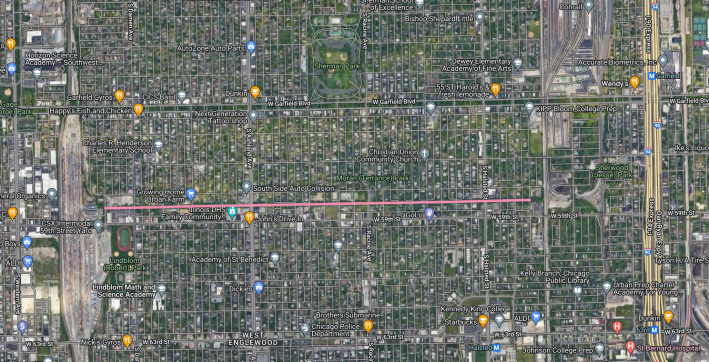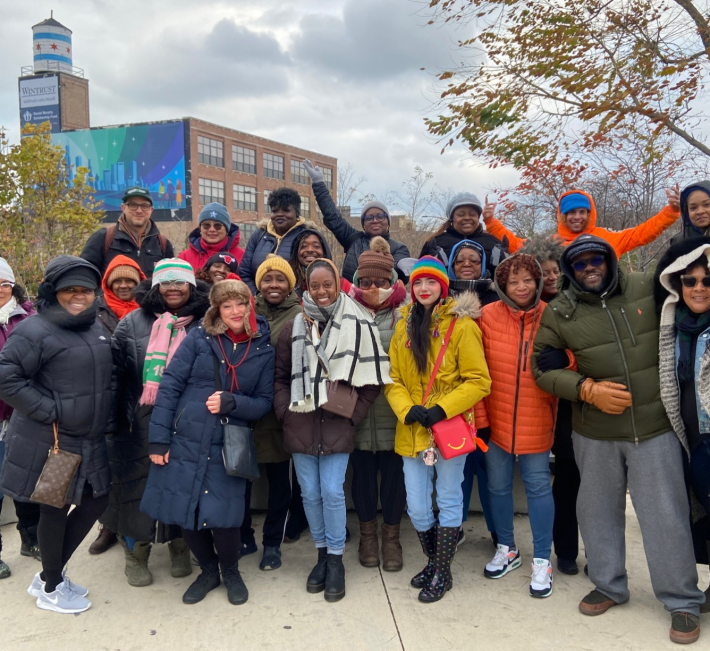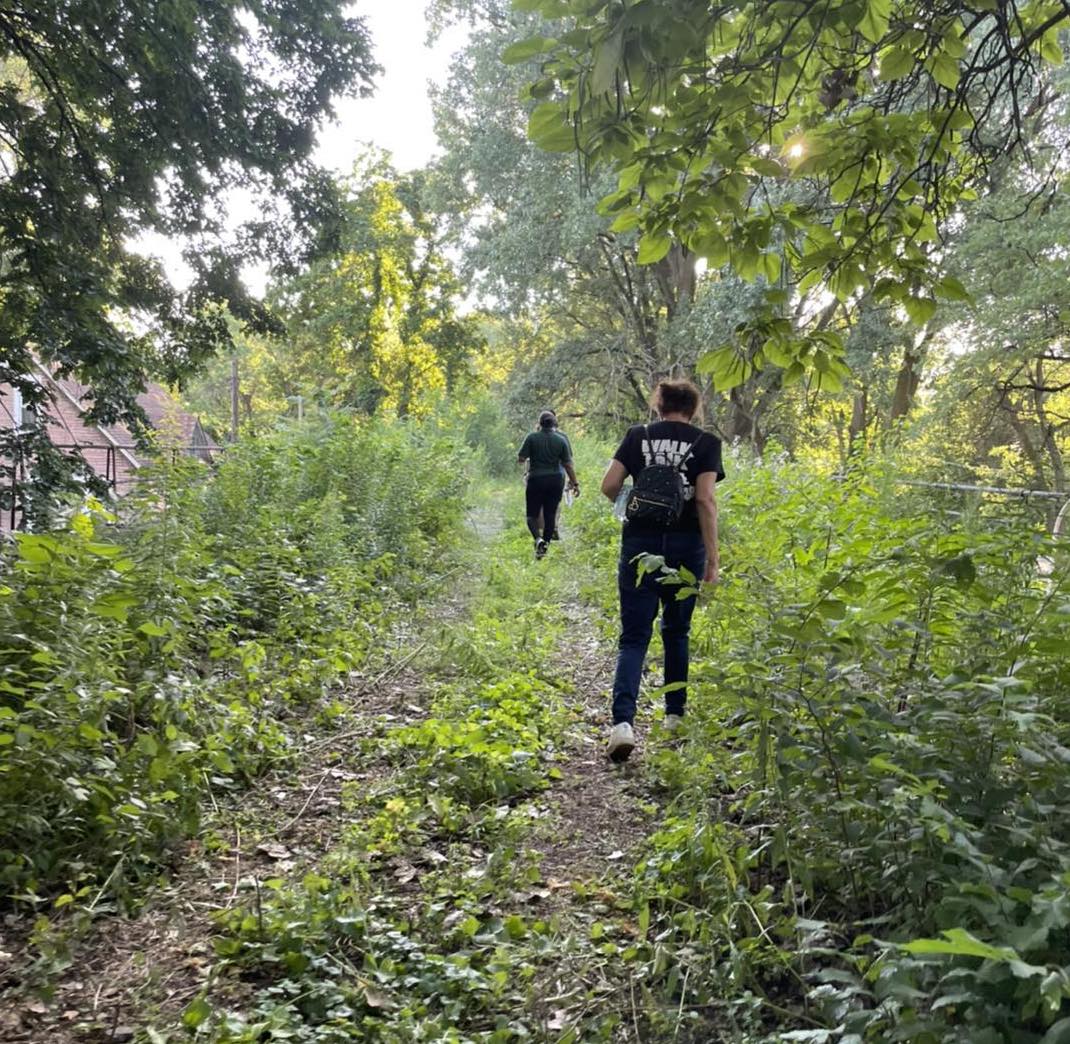Last April the city of Chicago earmarked $6 million to transform an unused 1.75-mile railroad embarkment located between 58th and 59th streets, running between Lowe (700 W.) and Hoyne (2100 W.) avenues in the Englewood community, into an elevated multi-use trail. Though other potential names, such as the Englewood Line, the Englewood Trail, and the 59th Street Line, were in the running, the one ultimately settled on was the Englewood Nature Trail.
In August the U.S. Department of Transportation awarded a $20 million Rebuilding American Infrastructure with Sustainability and Equity grant to Chicago for the greenway project. And last week deputy U.S. DOT secretary Polly Trottenberg stopped by the trail site for a press conference with local officials, promising that the federal money is on its way.

This week Streetsblog Chicago checked with Anton Seals Jr., the director of the sustainability nonprofit Grow Greater Englewood, which is helping to lead the charge on the trail development effort, for an update on the project. Seals made it clear he sees the future greenway as part of a larger community development effort in Englewood, a majority-Black community that has been negatively impacted by disinvestment. He hopes that the new transportation and recreation amenity will bring more customers to existing local entrepreneurs, as well as attracting new businesses that will employ neighborhood residents, and spurring nearby affordable development. He characterized the new investment in the community as "a reparational kind of act," that will help address past neglect of Englewood by decision-makers.
A similar linear park project on Chicago’s Near Northwest Side, the Bloomingdale Trail, aka The 606, has been heavily associated with rising housing costs and displacement. A 2020 report by the Institute for Housing Studies at DePaul University found that home prices along the western portion of that greenway had risen by 344 percent since 2012.
However, Seals argued that the Bloomingdale Trail and Englewood Nature Trail corridors involve very different kinds of communities, so it's not a parallel situation. He noted that The 606 neighborhoods – including Wicker Park, Bucktown, Humboldt Park, and Logan Square – were already gentrifying well before the trail was developed, which isn't the case in Englewood. "They didn’t have miles of vacant lots. They did not have a depressed market of vacant homes... So the only similarity is that you have an elevated trail, and that’s where it ends."

Seals added that he feels there has been a robust community input process for the Englewood project. There have been multiple meetings with residents to collect feedback, including topics like housing preservation and job creation. At the request of neighbors, Grow Greater Englewood is working on a community benefits agreement for the trail initiative that will lay out required policies, action items, and community resources to make sure the project is in the interest of local people. Potential strategies include revamping the corridor of the eminent domain map, an annual Cook County scavengers sale to help return vacant properties to productive uses, and property tax abatement to help lower-income property owners hold on to their homes as property values increase due to the greenway.
"So [equity will] be integrated into what the trail would look like and what we’re calling for the city, the state, and the county to support, so that these [things] aren’t just left to the market," Seals said. "That’s a lot of work, and we have to organize, and that’s what we’ve been doing.”
Seals added that part of the goal of this holistic project is "to break the narrative" that "a Black community is an unsafe community, a poor community – that’s the moniker that most black communities live with." Not only will the Englewood Nature Trail make the neighborhood a better place to live, he said, Grow Greater Englewood wants to make sure that it will directly benefit people who currently live there. "[Access to] open spaces and green spaces should not be predicated by how much money you make."





